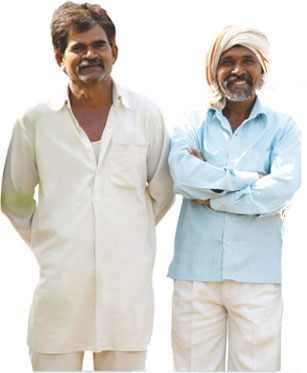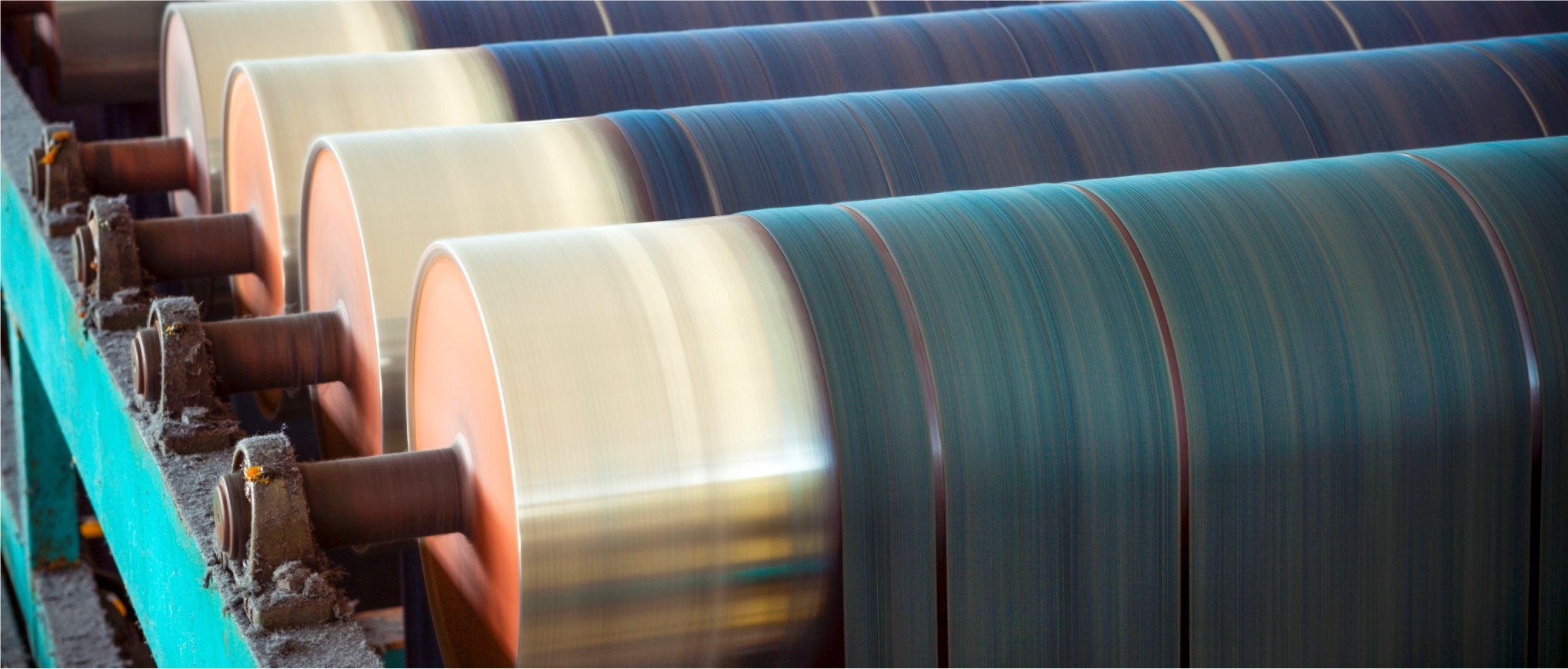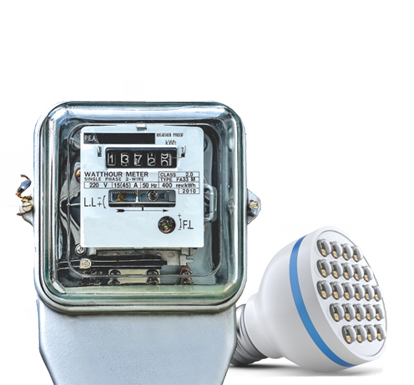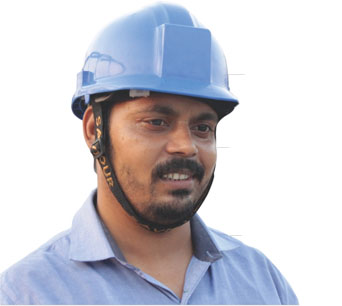





At Arvind, instead of looking at Cotton as just a key raw material, we see it as a vital ally and are developing a mutually beneficial ecosystem from farm to fabric.
Towards this goal, we have formed alliances with farmers to enhance production of sustainable cotton, with local partners to provide training to farmers and pickers, with research organisations for innovative practices, with Govt. and international organisations for water conservation & soil fertility and with companies like Inditex and Patagonia to strengthen the sustainable cotton value chain.
In the last three years, we have increased the area under cultivation as well as the farmers engaged in sustainable farming.

increase in area under cultivation of BCI cotton from 14,750 to 112,756 acre between FY 2014-15 and FY 2018-19
increase in number of BCI farmers from 3,395 to 26,289 between FY 2014-15 and FY 2018-19
reiterates the sustainability benefits of responsible cotton farming
and organic cotton farms through the strict implementation of anti-child labour policy
Our responsible supply chain mechanism is sourcing sustainable cotton from the farms to produce fabric. Around 26% of our cotton is sustainable and we are scaling this up now. We focus on promoting sustainable practices like Better Cotton Initiatives (BCI) Principles, Organic agriculture and Regenerative Organic Agriculture by partnering with several local NGOs and Producer organisations to implement these activities in various cotton producing states of India. Our sustainable farm operations help us to fulfil the rising demand for products made with sustainable cotton across Europe, North America and Asia.
| Type of Cotton | FY-14-15 | FY-15-16 | FY-16-17 | FY-17-18 | FY-18-19 |
|---|---|---|---|---|---|
| BCI | 14,750 | 11,119 | 24,328 | 65,840 | 112,756 |
| Organic cotton | 17,197 | 13,507 | *Suspended for better planning | 1,547 | |
| Regenerative Organic Cotton | New initiative started in FY 2018-19 | 84 | |||
| Total | 31,947 | 24,626 | 24,328 | 65,840 | 114,387 |
We aim to accelerate the area under cultivation of our sustainable farm operations to cover 400,000 acres of farmland and engage over 100,000 farmers by the year 2022-23.
We meet our suppliers periodically to ensure transparency and clear communication in the supply chain. We organised Supplier Day twice during the reporting period, to elaborate and familiarise our supplier group with Arvind's sourcing policy, sustainability practices and code of conduct.
Broadening The Farmers' Perspective
The look and feel of fabrics and clothes is obtained by the use of chemicals and dyes. In the interests of sustainability, it is important that the use of these chemicals is closely controlled, monitored and, as far as possible, reduced. At Arvind, we do this by following a life-cycle approach to ensure comprehensive chemical management.
We have adopted green chemistry and became the first textile mill globally to join Zero Discharge of Hazardous Chemicals (ZDHC) programme. We have also collaborated with Levi's and adhere to their Screened Chemistry Framework to eliminate hazardous chemicals from the value-chain.
One of the biggest challenges of the fashion industry is the multiple partnerships that go into manufacturing of a garment. Focussing on the entire value chain is essential to create sustainability. Therefore, at Arvind, we don't just partner with other brands, but form strong bonds that regard them as Allies who enable this new paradigm shift to take shape.
| Collaborating with Allies | Implemented Levi's Screened Chemistry Framework | ZDHC | LCA |
|---|---|---|---|
| Our key allies when it comes to chemicals are Levi Strauss & Co. and the Zero Discharge of Hazardous Chemicals (ZDHC) programme. | A hazard-based approach that evaluates chemicals from a hazard perspective. | Collaborated with programme to implement safer chemistry practices | Life Cycle Analysis at Santej and Naroda to map our fast-moving products against industry standards |
We adopted the 'GreenScreen for Safer Chemicals' for the 'Denim Laundry Operations' in FY 2015-16. Our aim was to evaluate chemicals from a hazard perspective through a structured approach. A comprehensive set of 18 human & environmental health and safety end points, as related to chemical substances are under evaluation through this approach.
For more details please refer to the Chemicals Chapter (Page 89 to 103) in our Sustainability Report 2019. Click here to view the Sustainability Report.
Accelerated demand for apparel coupled with a quick and easy supply of fashion products at affordable costs means higher consumption. This linear model of fashion where consumers buy, wear and toss the clothes into the landfill is going to rise with an increase in the population, negatively impacting people and the planet's resources
Our fundmentally right philosophy brings sustainability to all the inputs and processes that go into making our products. Even after the use phase is over, we make sure that our products are recyled to make new ones.
1. By offering our customers a sustainable product portfolio with an array of options to choose from.
2. By widening the scope of sustainability for them through joint development - right from raw material to the garment thereby making them an ally in sustainable fashion.
We form robust partnerships with our customers that leads to growth & innovation and help us deliver more value to stakeholders. These collaborations ensure that we stay ahead of the curve, innovate, positively impact socioeconomic and environmental aspects, and create mutual value for sustainable growth.
| Co-construct | Co-wash | Co-design |
|---|---|---|
| This involves finalising the most appropriate fabric for a specific requirement. This can be either done using our technical design services for fabric development or by delving into our vast library of availablefabrics. | Once the correct fabric has been identified, our garment experts employ different wash treatments to enhance and customise the feel and look of the fabrics. Our advanced wash lab at Naroda is equipped with state-of-the-art machinery, capable of high-end wash output through both - dry and wet processes. | Now that the fabric as well as the look and feel have been decided, our garment and fashion experts collaborate with the customer's design teams and create design options keeping in mind the prevalent fashion trends. Our master craftsmen then give form and silhouettes to the prototype of each design option. |
Arvind is partnering SEAQUAL to use the most certified, earth friendly fibres in the world. We use the high quality recycled polyester yarn made from recycled materials including postconsumer plastic bottles and plastic captured from the seas, contributing to preservation of natural resources and waste reduction.
| Recycled Denim The yarn of this fabric is made from recycled cotton (20%) from disposed denim garments and cotton (80%), which leads to 20% less water consumption and reduction of landfill space. |
ECOVERO Derived from certified renewable wood sources using an eco-responsible production process by meeting high environmental standards, LENZING ECOVERO fibers are tailored to a sustainable lifestyle, contributing to a cleaner environment. |
Recycled PolyesterAs part of our ReNEW process, we use recycled polyester from discarded PET bottles which would otherwise choke up Landfills. It is estimated that recycling 1 ton of PET saves an equivalent of about 4.7 barrels of oil.Producing recycled polyester also consumes 86% less water compared to virgin polyester. |
| Corduroy DenimCorduroy fabrics specially treated using the new Foam Indigo Dyeing technology and used for denim manufacturing. Foam finishing is a wet processing technology that uses air in form of dispersion foam for media application. It saves energy by more than 50% and brings down chemical consumption by 10 to 40%. | Neo Denim It is produced using sustainable Neodyeing technology which is a closedloop dye inject technology in Nitrogen environment. It eliminates dry drainage, optimises dye consumption, and reduces water consumption. |
Scafe Denim Made from recycled coffee grounds Linen Denim One of the few fabrics that remainstrong even when wet Excel Denim Made from choicest selection of wood pulp, a natural and renewable resource. |
| Organic Cotton A natural, renewable and biodegradable fibre that benefits cotton producers and the environment in developing countries by avoiding the harmful effects of toxic pesticides, and the reduced cost of production improves social conditions |
Advanced Denim Manufactured using a ground-breaking technology that reduces water and energy consumption by up to 92% and 30% respectively. |
Khadi Denim It is hand spun, hand hank dyed in natural indigo and woven on a handloom. It sports all the properties of natural denim like comfort, softness, and ageing. Additionally, the natural indigo injects anti-inflammatory, anti-fungal & antibacterial properties into the fabric. During the reporting period, we initiated commercial shipments of Khadi Denim to both, large-format brands like Levi's and niche boutique brands. |
Making Indigo Dyeing Process Sustainable

For more details please refer to the Product Chapter (Page 105 to 112) in our Sustainability Report 2019. Click here to view the Sustainability Report.
Energy powers our production and operations. The source and quantum of energy we consume significantly determines the sustainability of our organisation as it affects the cost of our products and our carbon footprint.
Thus it is not a surprise that we have made energy, its suppliers and its regulators our perpetual allies.
For greening our energy mix, we have installed a 16.2 MW rooftop solar at Santej, which is India's largest largest rooptop solar installation at a single location in collaboration with Cleantech Solar. We have also formed an alliance with NK Protein for supply of biomass to green our energy mix even further.

India's largest rooftop solar installation at a single location commissioned at santej
Total current solar power generation capacity across faclilities
Ethiopia operations are Fully powered by renewable energy
Exceeded target by 6.8% under the PAT scheme on energy efficiency at our Santej Unit compared to FY 2016-17 (Baseline Year)
Implemented ISO 50001energy management system at all our large energy consuming sites
reduction in direct GHG & 15% drop in indirect GHG emissions in five years
Optimising energy productivity offers myriad benefits such as GHG emissions reduction and low annual energy costs. Adding renewables to the energy mix enable us to derive maximum value out of each unit of energy consumed. Combined together, these steps make us a more responsible energy user and enable us to move on the decarbonisation pathway.
Based on this policy, we have developed an energy strategy 'Less Watt Per Metre' to flatten our energy demand curve and reduce our environmental footprint.
Coal, electricity and compressed natural gas were used for our operations till now. We diversified into solar power during the reporting period to increase the renewable energy mix in our operations. In fact, our Ethiopia operations are completely powered by solar energy now. We are working towards increasing solar power as a source of energy for our other units too. We have expanded the scope of our disclosures to reinforce our energy accountability by including smaller units at Arvind in the reporting period.
| Performance | Emissions |
|---|---|
| After an increase in FY 2016-17, our energy use has been consistently going down due to various energy efficiency initiatives such as installing new boilers and energy-efficient motors, implementing ISO 50001 standards, and shifting to LEDs from incandescent tube-lights. | Energy conservation initiatives such as shifting to LED, implementing ISO-50001, installing new boiler and bringing in efficient motors led to decrease in the energy consumption resulting in both direct and indirect emissions going down. Implementation of various energy efficiency projects including daylight harvesting systems, the variable frequency drives in motors, condensate recovery systems, flash steam recovery system, and use of solar energy has led to reduction in GHG emissions. |
| Units | FY 14-15 | FY 15-16 | FY 16-17 | FY 17-18 | FY 18-19 |
|---|---|---|---|---|---|
| Woven & Knits | 2,580 | 2,566 | 2,686 | 2,933 | 2,860 |
| Denim | 1,300 | 1,227 | 1,160 | 1,130 | 1,015 |
| Garments Export Division | 78 | 101 | 60 | 110 | 105 |
| Yarns* | 1.12 | 0.86 | 0.42 | 0.94 | 0.51 |
| Voiles | 243 | 269 | 263 | 303 | 284 |
| Total | 4,202 | 4,164 | 4,169 | 4,477 | 4,264 |
* Note: Yarns business include - Arvind cotspin & Arvind intex. Arvind Intex uses only purchased eletricity and hence nodirect energy consumption.
| Units | FY 14-15 | FY 15-16 | FY 16-17 | FY 17-18 | FY 18-19 |
|---|---|---|---|---|---|
| Woven Knits | 3.26 | 3.18 | 3.07 | 3.06 | 2.94 |
| Denim | 2.27 | 2.2o | 2.09 | 1.63 | 1.61 |
| Garments Export Division ( kg CO2/pieces) | 0.92 | 0.88 | 0.73 | 0.60 | 0.50 |
| Yarns (kg CO2/kgs of production | 2.55 | 2.67 | 2.71 | 2.65 | 2.66 |
| Voiles | 1.15 | 1.17 | 1.00 | 0.94 | 0.94 |
Specific GHG emissions have gone down by 29% and 10% at Denim and Woven & Knits units respectively, over a period of five years.
Energy conservation at Arvind is not just limited to changing the conventional bulbs with LEDs or adopting the new energy efficient technologies. It's about building a culture of conservation where each and every employee in the organisation participates. We have also enhanced the energy conservation awareness of our vendors through trainings, workshops and seminars. This empowers us to conserve beyond our sphere of operations and thereby contribute to the climate narrative on a larger scale.
Powering Operations Through Solar
For more details please refer to the Energy Chapter (page 62 to 71) in our Sustainability Report 2019. Click here to view the Sustainability Report.
Money is not viewed as just a critical input at Arvind, but as a financial ally to achieve economic, social and ecological goals.
As a means to this holistic end, we partner with investors and financial institutions to raise capital, which is deployed for expanding capacities, fuelling growth, upgrading technology, procuring & hiring locally, nurturing talent, setting R&D centres, and in turn, giving back to the shareholders, government, community and environment.
| Performance | FY-14-15 |
|---|---|
FY 2016-17
|
Going ahead, Arvind's value creation agenda will be:
|
FY 2017-18
|
|
FY 2018-19
|
|
For more details please refer to the Money Chapter (page 54 to 60) in our Sustainability Report 2019. Click here to view the Sustainability Report.
Right from the cultivation of cotton, to transforming into a garment - water plays a key role at every stage in our industry.
At Arvind, we treat water as a natural ally and ensure that our operations put as little stress on freshwater as possible.
In pursuance of this objective, we have formed alliances with Santej and Gandhinagar Municipal Corporations to use treated domestic sewage for manufacturing. Another close ally is Arvind Envisol, who specialises in water and wastewater solutions. We have also joined forces with Gap Inc. to eliminate the use of freshwater in denim manufacturing.
Joined hands with Gap Inc. to set up an innovation centre and a water treatment facility to eliminate use of freshwater in making denim.
| Performance | Effluent Management |
|---|---|
| Notwithstanding increase in the production volume across woven, denim, and garmentsegments in the reporting period, our freshwater consumption has subsequently decreased during the same time. Myriad initiatives on conservation, recycling and process innovations have led to reduction in water use. | Effective management of effluents address the environmental sustainability and economic viability of Arvind. During the period, total water treated and discharged has dipped due to decrease in the overall water use, but recycling did not decrease in proportion. So essentially, we are using less freshwater, recycling a higher percentage of that, and hence, a lower percentage is discharged. |
| Units | FY 14-15 | FY 15-16 | FY 16-17 | FY 17-18 | FY 18-19 |
|---|---|---|---|---|---|
| Woven & Knits | 1,465 | 1,537 | 1,461 | 1,300 | 804 |
| Denim | 4,126 | 3,407 | 3,183 | 2,967 | 2,598 |
| Garments Export Division* | 217 | 269 | 260 | 223 | 236 |
| Yarns** | 251 | 255 | 232 | 253 | 266 |
| Voiles | 724 | 732 | 550 | 371 | 460 |
| Total | 6,783 | 6,200 | 5,686 | 5,113 | 4,364 |
| Units | FY 14-15 | FY 15-16 | FY 16-17 | FY 17-18 | FY 18-19 |
|---|---|---|---|---|---|
| Woven Knits (Santej) | 5,036 | 5,550 | 4,294 | 4,569 | 5,198 |
| Denim ( Naroda) | 2,852 | 99 | 270 | 129 | 106 |
| Garments Export Division | 114 | 2,781 | 2,465 | 2,161 | 1,950 |
| Voiles | 55 | 33 | 242 | 462 | 463 |
| Total | 5,205 | 5,682 | 4,806 | 5,160 | 5,767 |
* Note: Yarns business include - Arvind cotspin & Arvind intex. Arvind Intex uses only purchased eletricity and hence nodirect energy consumption.
Bridging The Water Conservation Gap
For more details please refer to the Water Chapter (Page 72 to 87) in our Sustainability Report 2019. Click here to view the Sustainability Report.
Society provides us a license to operate, gives us access to talent, entrusts us the responsibility to add value to natural resources and buys our value-added products. Thus, we are committed to being a strong ally to society.
To leverage synergies and affect sustainable transformations in society, we have formed partnerships with numerous NGOs, clients and vendors. We have allied with the National Skill Development Corp. for skilling youth. We teamed up with GAP Inc. for educating and empowering women employees.

Man -day Total Training during reporting period
Average Accident Frequency Rate in Santej Facilities
Overall reduction of in incident Rate (reportable accident per 1000 workers)
Overall reduction of in Fire Incidences
Certification at Naroda facility
Million - Total CSR spend during reporting period
organisation, and we are committed to their growth, development and wellbeing.In order to keep our 30,000+ workforce updated, we design and implement comprehensive employee engagement and development programmes, foster a conducive work environment and consistently provide opportunities for professional and personal development.
| Description | FY 16-17 | FY 17-18 | FY 18-19 |
|---|---|---|---|
| Man- day of Training given | 9,593 | 16,117 | 9,356 |
| Total no. of Participants in Training Programmes | 7,365 | 13,750 | 22,600 |
| Total Training Days (Man days) | 142 | 88 | 475 |
| No. of Training Programmes | 75 | 46 | 91 |
| No. of Participants in Outbound Training | 50 | 0 | 28 |